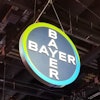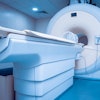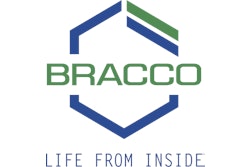The revised labeling policy issued by the U.S. Food and Drug Administration (FDA) last week appeared to zero in on Omniscan, Magnevist, and Optimark as the key suspects in the occurrence of nephrogenic systemic fibrosis (NSF), but the new rules also modify requirements for the four other gadolinium-based contrast agents approved for use in the U.S.
NSF is a devastating disease that's been linked to the administration of gadolinium-based MRI contrast agents. The FDA's changes in labeling instructions aim to improve the black box warnings the agency issued in 2007 to address growing concern about the disease. The new rules also increase the scope of preventive measures to other sections of the package insert to better define patient screening requirements and utilization restrictions.
The new policy establishes two separate black box warnings. One applies to Omniscan (gadodiamide) from GE Healthcare of Chalfont St. Giles, U.K.; Magnevist (gadopentetate dimeglumine) from Bayer HealthCare Pharmaceuticals of Wayne, NJ; and Optimark (gadoversetamide) from Covidien of Dublin, Ireland. The three gadolinium-based contrast agents are now contraindicated for administration to patients with acute kidney injury or chronic, severe kidney disease.
Users are informed in the black box warning for the contraindicated agents that they are not to be administered to patients with chronic, severe kidney disease (defined by a glomerular filtration rate [GFR] of less than 30 mL/min/1.73m2) or acute kidney injury. Patients are to be screened for acute kidney injury and other conditions that may reduce renal function. A GFR test is required for patients at risk for chronically reduced function.
The FDA with its new policy did not require contraindications for four other agents on the U.S. market: MultiHance (gadobenate dimeglumine) and ProHance (gadoteridol) by Bracco Diagnostics of Princeton, NJ; Ablavar (gadofosveset) by Lantheus Medical Imaging of North Billerica, MA, and Eovist (gadoxetate) by Bayer. But the agency did order changes in the package insert language for these products.
The FDA now requires specific patient screening and kidney function tests for patients suspected to be at risk for NSF before the use of these agents with MRI scans. The requirements include avoiding administration for patients who would have problems eliminating the drugs unless the diagnostic information from the contrast-enhanced MRI is essential and not available with nonenhanced MRI or other modalities.
Users are also instructed to screen patients for acute kidney injury and other conditions that may reduce renal function. A GFR test is required for patients at risk for chronically reduced renal function.
The FDA gets specific
With the labeling changes, the FDA has issued specific instructions on how to screen patients, said Jeffrey Weinreb, MD, professor of radiology at Yale University in New Haven, CT.
"They were very explicit about screening people verbally about risk factors and measuring the serum creatinine and glomerular filtration rates of people who meet certain risk criteria," he told AuntMinnie.com.
The agency also emphasized the limitations of such testing, noted Rafel (Dwaine) Rieves, MD, the FDA's director of medical imaging products. Many physicians know that a GFR score of 30 mL or less defines abnormal kidney function, but some do not realize that patients can be experiencing renal failure in the setting of acute kidney injury and still have just a mildly abnormal or normal serum creatinine test, he said.
Explicit monitoring requirements will now apply for at-risk patients who are administered a gadolinium-based agent. The tracking system will determine over time if patients with compromised kidney function develop NSF with any of the four agents that aren't contraindicated.
The new rules largely reflect the recommendations filed by an FDA expert panel last December. According to Rieves, the panel concluded that gadolinium-based contrast agents could be classified at higher and lower risks. The panel was fairly convinced that Omniscan and Optimark were in the higher-risk group, and the general opinion was that Magnevist belonged in the higher-risk group as well, he said. The FDA's internal evaluation led to the conclusion that Magnevist was also inappropriate for at-risk patients.
Addressing misconceptions
Rieves noted that the new rules set aside some misconceptions of NSF that were widely held when it issued its initial set of rules. In 2007, the FDA associated NSF risk with chronic, severe renal insufficiency, and also renal insufficiency in the setting of acute hepatorenal syndrome or the liver during a transplant period.
"What we have since learned is that the common theme is not so much related to the liver," he said. "The better descriptor is just the 'setting of acute kidney injury' for whatever reason. It is not confined to just the liver."
Weinreb and several other radiologists contacted by AuntMinnie.com were puzzled by new requirements in the dosage administration section of the package insert that instructs physicians not to repeat gadolinium administrations during a single imaging session, regardless of the patient's renal status. They noted that the rule would force practitioners to stop the procedure to repeat the enhanced scan on another day.
The policy stems from the growing medical understanding about the cause of NSF, Rieves explained. It occurs when gadolinium-based contrast is retained in the body.
"The half-life of these products is such that they can accumulate with repeat administrations over a short period of time," he said. "Given that risk, we don't believe it justifies a repeat exposure to justify the improved contrast."
Potential benefits
MRI safety expert Emanuel Kanal, MD, sees a number of potential benefits from the new labeling guidelines -- so many that he preferred to single out the few additional things that he believes should be done. At the top of his list is a requirement to advise physicians to use the lowest dose possible when administering gadolinium contrast to patients with significant renal disease.
Kanal, who is director of MRI services at the University of Pittsburgh, understands why this point was not addressed, however, given the scope of FDA responsibility covering therapeutic drugs as well as diagnostic pharmaceuticals. Advising physicians to use the lowest possible for dose for an antibiotic, for example, could encourage the development of resistant bacteria, a problem that would never arise by reducing the dose of an imaging agent.
"Overall, however, the FDA requirements are extremely consistent with current thinking with current-day radiology," he told AuntMinnie.com.
Other modifications
Bracco voluntarily updated the warnings section of the prescribing information for its MultiHance agent to be more consistent with prescribing information for other gadolinium-based contrast agents, said Alberto Spinazzi, MD, senior vice president of medical affairs at the company.
Labeling for all gadolinium-based contrast media acknowledge the possibility of mild-to-severe anaphylactic and anaphylactoid reactions, involving cardiovascular, respiratory, and/or cutaneous manifestations. Package inserts for every FDA-approved agent, except Eovist and Optimark, also call for several hours of close patient observation, especially for patients with histories of drug reactions, allergy, or other hypersensitivity disorders.
The labeling for MultiHance notes that the initial symptoms of such reactions occurred within minutes of contrast administration and resolved with prompt emergency treatment.
Vendor response
In written statement, Bayer and GE promised to comply with the FDA's directives, while emphasizing that the cases involving the risk of NSF are relevant to fewer than 1% of gadolinium-enhanced MRI procedures.
Bayer announced in writing that it will work closely with the FDA on the topic of NSF and will respond to the agency within the 30-day comment period described in the announcement letter. Bayer will also continue ongoing, comprehensive pharmacovigilance monitoring of its Magnevist and Eovist agents, and it will make periodic safety reports to the FDA and other regulators.
Covidien closed the book in November 2009 on administering Optimark to patients with severe renal impairment by issuing a voluntary clinical contraindication. The agent remains available for use in patients with normal renal function. In a written statement, Herbert Neuman, MD, Covidien's chief medical officer for pharmaceuticals, said the FDA action validated Covidien's decision and reinforces the agency's effort to ensure patient safety and the safe use of all gadolinium contrast agents.
According to GE, the new safety language reinforces the existing good medicine practices that physicians and health agencies have already adopted regarding NSF. It also formally recognizes the need for appropriate patient selection and patient management.
In an interview, however, Eric Cantor, MD, head of medical and professional affairs in the Americas for GE Healthcare Diagnostics, questioned the need for the new FDA policy, considering the success of the previous FDA black box rule in helping to halt new NSF cases.
"Physician practices have changed, and these changes have led to a precipitous drop in the incidence of NSF," he said in an interview. "What the FDA is doing here is just formalizing what physicians have already done."
MRI practitioner Lawrence Tanenbaum, MD, came to similar conclusions. He saw nothing surprising or unexpected in the new FDA rules.
"It is common practice to avoid gadolinium in higher-risk cases or, more commonly, use an alternative agent. Many radiologists have shifted to less provocative agents," he wrote in response to an e-mail inquiry.
Still, the FDA's actions underscore the need for the active involvement of individual MR practitioners to keep NSF under control, according to Weinreb. Without regulation, physicians would naturally tend to allow imprudent practices to infiltrate their services.
"This document makes it clear that you need to be vigilant," he said.
By James Brice
AuntMinnie.com contributing writer
September 16, 2010
Related Reading
FDA updates warning labels on gadolinium contrast, September 9, 2010
ACR tackles NSF risk in new gadolinium MRI contrast guidance, June 17, 2010
GE settles NSF case with Calif. woman, March 25, 2010
MGH study: Adverse reactions to gadolinium contrast are rare, January 22, 2010
Italian researchers cut gadolinium dose -- as well as NSF risk, January 21, 2010
Copyright © 2010 AuntMinnie.com



.fFmgij6Hin.png?auto=compress%2Cformat&fit=crop&h=100&q=70&w=100)




.fFmgij6Hin.png?auto=compress%2Cformat&fit=crop&h=167&q=70&w=250)











